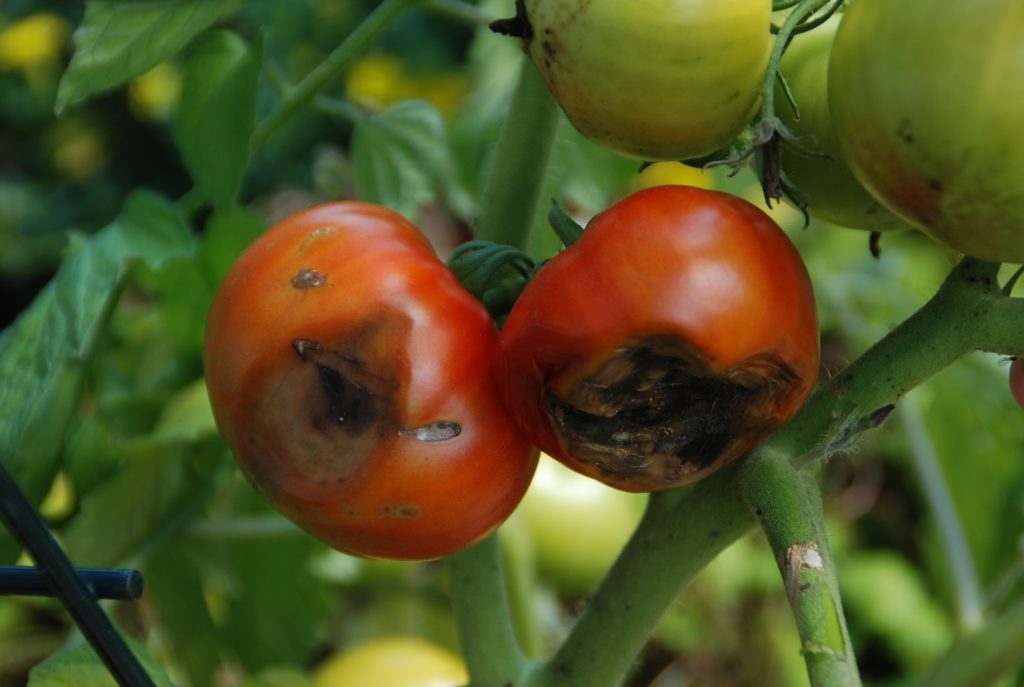You have waited all season for that first red ripe tomato only to discover less-than-perfect fruit. But don’t worry; you can still have a great harvest this year while improving things for next season.
Blossom end rot is a common problem. It’s due to a calcium deficiency often caused by fluctuations in soil moisture, often seen on the first set of fruit and those grown in containers.

Adjust your watering and mulch the soil to help keep it consistently moist. Have your soil tested before adding any calcium fertilizer. Further reduce the risk of blossom end rot by avoiding root damage when staking and cultivating your garden. Eliminating some of the roots limits the plant’s ability to absorb water and nutrients. And, don’t use ammonium forms of nitrogen prior to or during fruit set.
Fortunately, it is safe to eat the firm red portion of the tomato. Since this is a physiological and not disease or insect problem, you can cut off the black portion and toss it into the compost pile.
Cracked fruit are also common in the garden. Fluctuating temperatures, moisture and improper fertilization result in irregular development of the fruit that leads to cracking. You can’t change the weather, but you can reduce the risk of this problem with thorough, less frequent watering to encourage deep roots. And just like blossom end rot, mulch the soil to keep it evenly moist and be sure to avoid root damage.
Several fungal diseases such as early and late blight, septoria leaf spot and anthracnose, can cause spots on the leaves and fruit of tomatoes. Minimize the problem by rotating your plantings whenever possible. Move your tomatoes to an area of the garden where unrelated crops, such as beans, lettuce or onions, were grown last season.
Mulch the soil to help keep soil borne fungal spores off the plant. Water early in the day, and if possible, apply the water directly to the soil with a soaker hose, drip irrigation or a watering wand to reduce the risk of disease.
Properly space and stake or tower the plants for better air circulation and remove susceptible weeds and volunteer tomato plants to further reduce the risk of these and other diseases.
Always clean up and dispose of tomato and other disease-infected plant material in the fall. Cultural practices and growing the most disease-resistant varieties available are often enough to keep these diseases under control.
As a last resort you may choose to use a fungicide. Select one labeled for food crops and apply at the first sign of the disease. Repeat applications are usually needed. Be sure to read and follow all label directions carefully whether using organic, natural or synthetic fungicides.
Melinda Myers has written numerous books and hosts How to Grow Anything DVD series and the nationally-syndicated Melinda’s Garden Moment TV & radio program. Her web site is MelindaMyers.com.
Related Articles & Free Subscription

Container Gardens for Every Occasion
Natural Pain Relief is as Close as Your Garden






Comment here